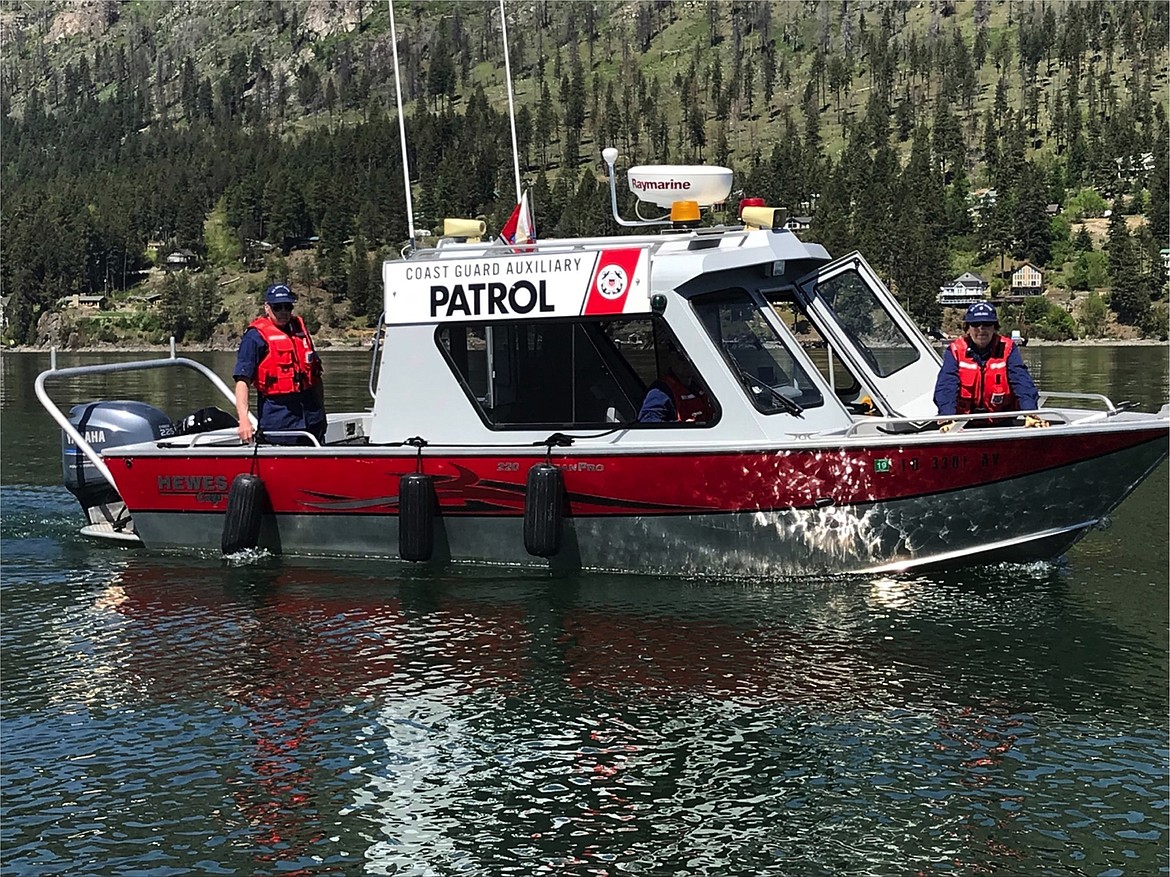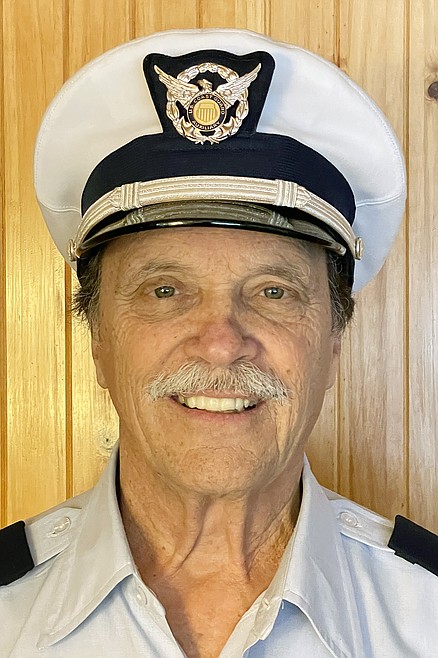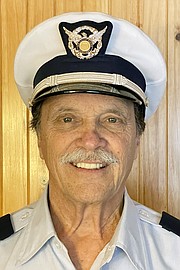Before you head out on the lake: first things first
TOM BARNES Contributing Writer | Bonner County Daily Bee | UPDATED 2 years, 8 months AGO
It’s catching and we’ve all got a touch of it. Cabin fever. If we’re not currently working on our boat we are certainly thinking about getting it ready so we can put it back in the water and enjoy those warm sunny days on the lake, river or ocean.
But first things first. Before you push on the throttle, and even before your boat touches the water, you need to be sure that all the necessary safety equipment is onboard and functioning properly. Your life, and the lives of all those on board, could depend on it, literally.
We all think of life jackets, fire extinguishers and navigation lights as some of the most obvious safety equipment to have on a boat to protect us from drowning, burns and collisions. But there are other, sometimes less obvious, equipment considerations to improve our chances of having a safe, fun and exhilarating day on the water. Having a checklist to use periodically, or even every time we “hit the water,” is a good habit to get into to make sure that what you should have on board really is on board and functional. In fact, Idaho has a checklist of required equipment that must be on board. (Reference “The Handbook! of Idaho Boating Laws and Responsibilities”, as well as “A Boater’s Guide to the Federal Requirements for Recreational Boats and Safety Tips”). Let’s talk about some of the required and recommended equipment.
REQUIRED ITEMS
Personal Flotation Devices (PFDs) — Next to the ventilation system, PFDs are probably the most important safety devices to have on board. They can save your life as well as those of others on board your vessel. But they are only useful if they are worn or readily accessible in an emergency. PFDs come in various sizes so it is important to make sure that they fit properly. Too large of a PFD on a child, for instance, might allow him/her to slip through the PFD and drown. Children less than 14 years of age MUST wear an approved PFD at all times when underway in a vessel 19 feet or less in length.
There are five different types of PFDs:
- Offshore (Type I) – Used in rough or remote water where rescue may take a while. They also provide the most flotation and will keep most unconscious persons face-up in the water.
- Near-Shore (Type II) – Good for calm waters and where a quick rescue is likely. May or may not keep an unconscious person face-up in the water.
- Flotation Aids (Type III) – Vests or full-sleeved jackets are best for calm waters where rescue is likely. These are not recommended for rough waters since they will not turn most unconscious persons face-up.
- Throwable Devices (Type IV) – Either ring buoys or cushions, they are designed to be thrown to persons in the water, but not to be worn.
- Special-Use Devices (Type V) – These are vests, deck suits or hybrid PFDs and are used mostly for special activities such as windsurfing, waterskiing, or kayaking.
Fire extinguishers — An on-board fire can be catastrophic for obvious reasons and every precaution should be taken to avoid one. But if a fire does occur you must be prepared. All vessels less than 26 feet in length are required to have at least one U.S. Coast Guard-approved Type B-1 (carbon dioxide or dry chemical) fire extinguisher on board for use on gasoline, diesel fuel, oil or grease fires. All vessels greater than 26 feet must have two B-I or one B-II extinguishers on board. It is critically important that the extinguishers be readily available but not so near a potential ignition source that they cannot be safely accessed. It is also important that everyone on board is made aware, before you are underway, of the location of the fire extinguishers and how to use them so anyone can attend to a fire if necessary. And, lastly, but most importantly, make sure that the gauge needle on your extinguisher is in the green. If not in the green it is of no use to you.
Ventilation system — With the obvious exception of sail boats and most commercial vessels powered by diesel engines, most boats use gasoline as their fuel of choice. Vapors from the highly flammable gasoline are easily ignitable. Because of this fact a ventilation system consisting of blowers is necessary on inboard and to dissipate any vapors that might exist in the engine compartment. It is always advisable to turn on the blowers for a minimum of 4 minutes prior to starting the engine to ensure that all possible vapors are eliminated in the event sparking occurs. Otherwise, you could have an explosive and potentially deadly situation even before you leave the dock or launch area.
Backfire flame arrestors — Another safety device intended to prevent the ignition of gasoline vapors is a backfire flame arrestor(s) which is attached to each carburetor. The arrestors must be USCG-approved and comply with SAE J-1928 or UL 1111 and marked accordingly. The arrestors are on inboard and inboard-outboard engines.
Navigation lights — Unless you have an operational radar you will not be able to see other boats at night unless they have navigation lights. If your navigation lights are functional, other boats will be able to see you. If other boaters lights are working you should be able to see them. Having this visual means by which ve ssels can “see” each other at night is critical in avoiding a collision. Even if you do not intend to be out on the water after dark it is important to plan for that possibility. Before putting your boat in the water or leaving the dock always make sure that your navigation lights are functional. You may never know when you might need them. And, remember, you can always determine in which direction a boat is traveling by seeing the red (port) and green (starboard) “nav” lights. Port is on the left and starboard is on the right when facing the bow. An easy way to remember what side of a boat the red light is on is remembering that port wine is red.
Certificate of registration — Like your automobile, you must have a valid certificate of registration onboard to operate your vessel legally. The hull identification number (HIN), usually found on the transom of your boat, should match what is listed on your certificate.
Validation stickers — These are the adhesive, colored, boat stickers, or license, for the year it is valid that are placed on each side of the bow. Each sticker has the last 2 numbers of the current year. They must be in line with your unique boat identification number.
Muffler — To limit noise from your boat you must have a permanently installed muffler system on your boat. For boats built before January 1, 1995, the noise limit is 90 dB(A). For vessels built on or after January 1, 1995, the noise limit is 88 dB(A). All noise limits are for stationary periods using a state-approved protocol method (SEA J2005).
Sound Producing Devices — When visibility is limited or when you need to signal your intentions or position, a sound-producing device is required. This includes a whistle that can be heard for at least one-half mile for vessels less than 65.6 feet. For a vessel larger than 65.6 feet, a whistle and a bell must be must be on board and be heard for at least one mile.
Visual Distress Signals — Unless your vessel is less than 16 feet in length, a non-motorized open sailboat less than 26 feet in length, or a hand-powered vessel, it is required to have visual distress signals (VDSs) on board. These requirements apply only to federally-controlled waters. Approved VDSs include:
- Three handheld red flares (day and night), or
- One handheld red flare and two red meteors (day and night), or
- One handheld orange smoke signal (day), two floating orange smoke signals (day), and one electric light (night only).
RECOMMENDED ITEMS
Radio — Although not on the list of required boat equipment, it is a good idea to consider adding a VHF-FM radio to your list of boat equipment. If you find yourself in an emergency situation, having a VHF-FM radio can be a life saver. You can also monitor the radio to obtain weather information and provide assistance if called upon. When your radio is turned on you should turn it to Channel 16, the channel most often used to initially communicate with other vessels, marinas, law enforcement or the U.S. Coast Guard. If you do not have a radio you may not be able to communicate with another boat or the Sheriff’s Marine Division for assistance. You may be in an area where cell phone signals are not available and in an emergency, a cell phone may be useless.
Anchor — For convenience, as well as safety reasons, it is recommended that you have an anchor with suitable amount of rode (chain and line). The chain helps the rode lie flat on the bottom enabling the anchor to dig in and hold. The USCG-recommended length of rode is 7:1, which includes depth and the distance from the bow chock to the surface of the water. Thus, if the water depth is 10 feet and the distance from the water surface to the bow chock is 4 feet you will need 98 feet of anchor rode (10 feet plus 4 feet equals 14 feet times 7 feet).
Bailing device — To prevent capsizing or sinking you should make sure you have an adequate bailing device, mechanical or manual (bucket).
Contact your local U.S. Coast Guard Auxiliary for a free vessel examination.
Tom Barnes is the public affairs officer for U.S. Coast Guard Auxiliary, Flotilla 87 in Sandpoint, Idaho. For comments or questions, contact Tom at tombarnes.tb@gmail.com.






